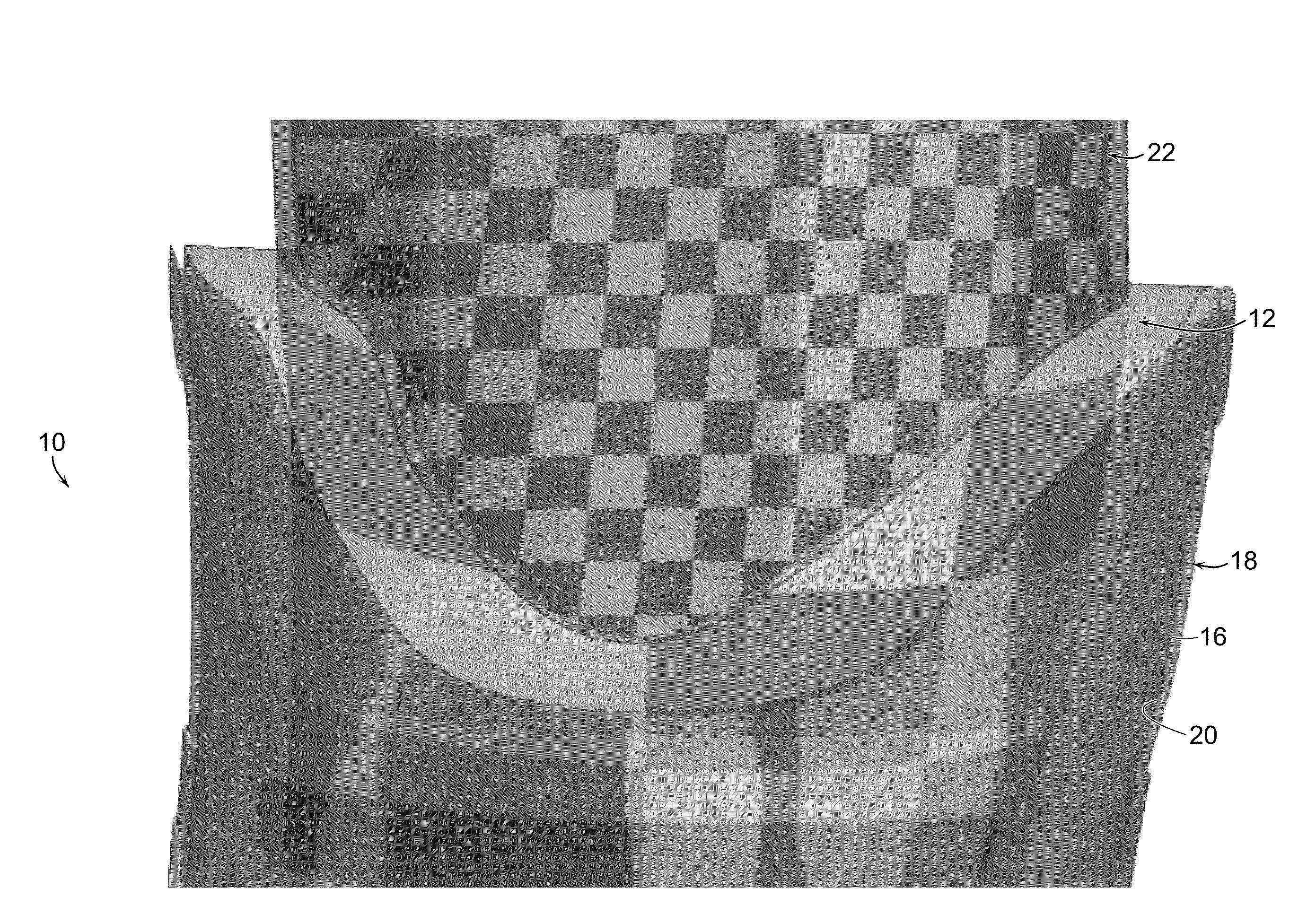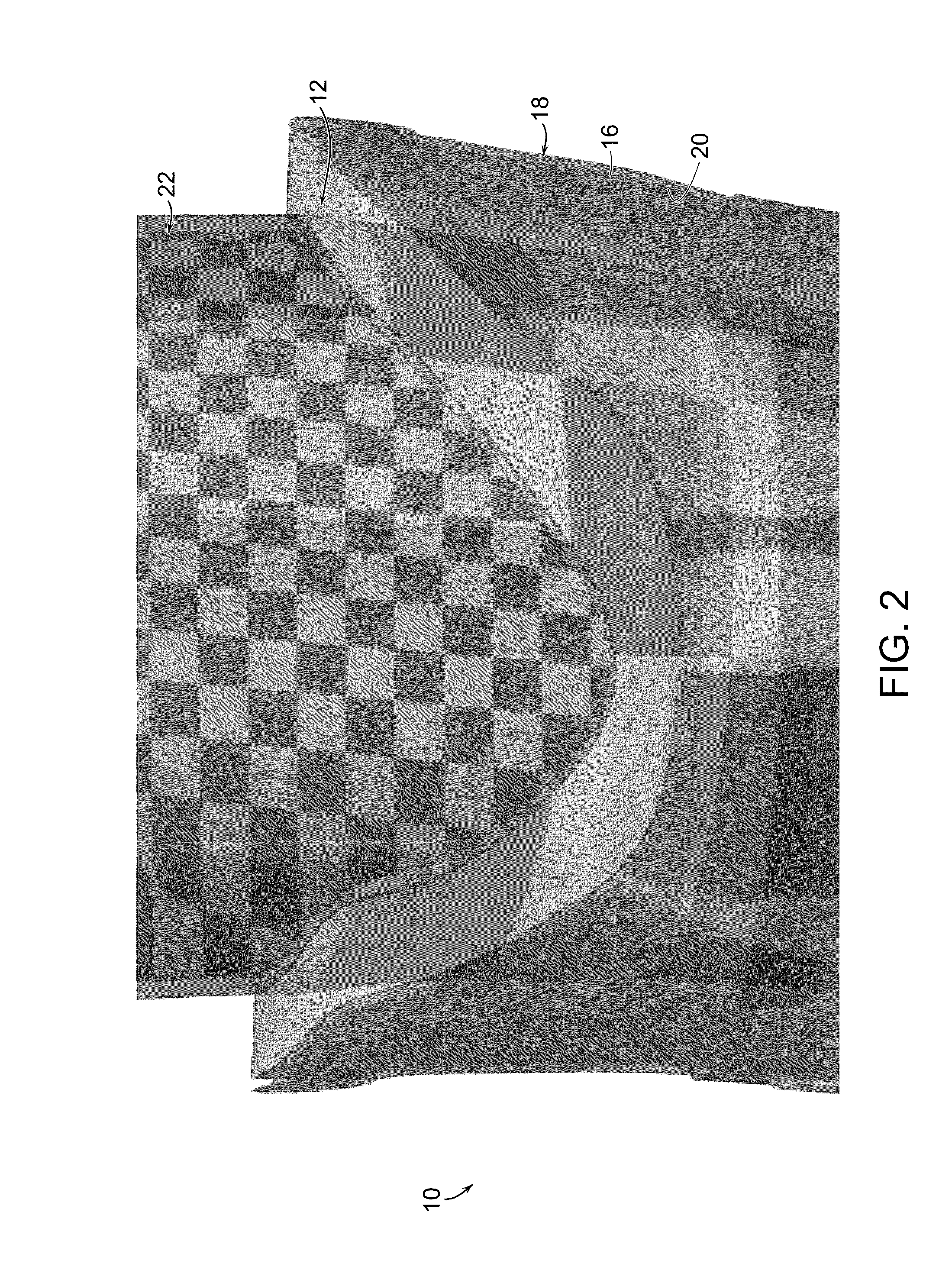Variable Impedance Mechanical Interface
- Summary
- Abstract
- Description
- Claims
- Application Information
AI Technical Summary
Benefits of technology
Problems solved by technology
Method used
Image
Examples
Embodiment Construction
[0034]A description of example embodiments of the invention follows.
[0035]The invention generally is directed to a method for fabricating a mechanical interface connecting a biological body segment to a wearable device, and to a mechanical interface for connecting a biological body segment to a wearable device. The invention employs a quantitative scientific methodology that includes measurements, such as biological segment shape, viscoelastic tissue properties, vascularization anatomy, nerve sensitivities and skin strain characteristics during joint movements, to generate an interface having corresponding shape and impedance characteristics, both spatially and temporally. It will be understood by those of skill in the art that the methodologies presented can be employed in the mechanical-interface design and fabrication of any wearable mechanism, including prosthetic, orthotic and exoskeletal devices.
[0036]In one embodiment, the mechanical interface 10 of the invention, shown in FI...
PUM
 Login to View More
Login to View More Abstract
Description
Claims
Application Information
 Login to View More
Login to View More - R&D
- Intellectual Property
- Life Sciences
- Materials
- Tech Scout
- Unparalleled Data Quality
- Higher Quality Content
- 60% Fewer Hallucinations
Browse by: Latest US Patents, China's latest patents, Technical Efficacy Thesaurus, Application Domain, Technology Topic, Popular Technical Reports.
© 2025 PatSnap. All rights reserved.Legal|Privacy policy|Modern Slavery Act Transparency Statement|Sitemap|About US| Contact US: help@patsnap.com



